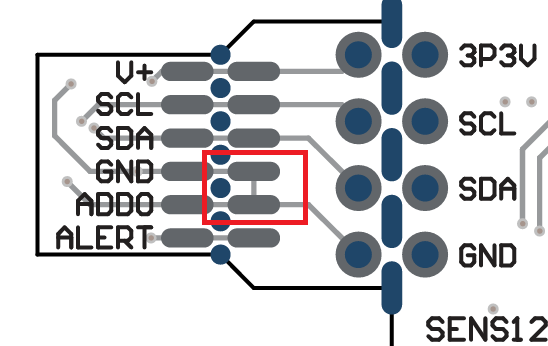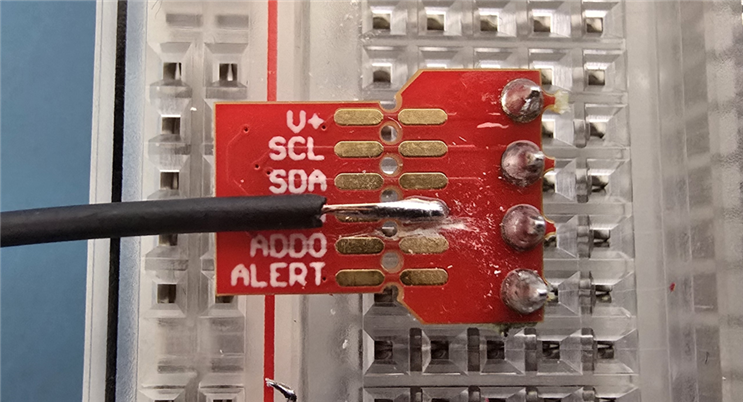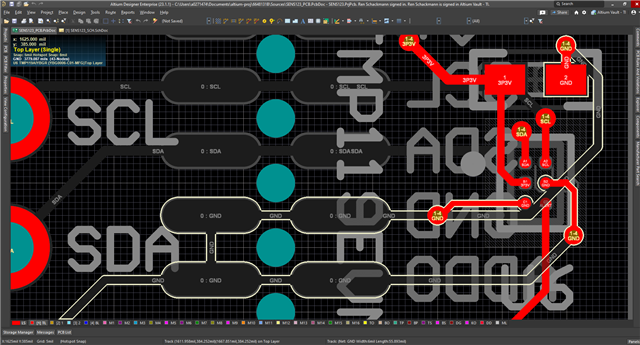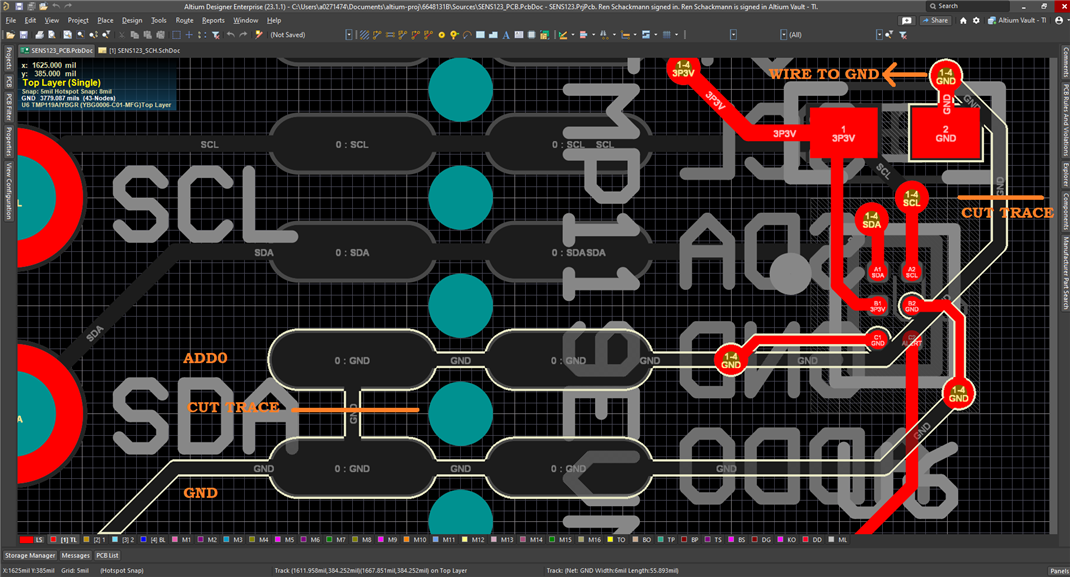Other Parts Discussed in Thread: TMP119,
Tool/software:
Hi,
I'd like to have support on the TMP119 EVM board.
https://www.ti.com/tool/TMP119EVM
I'd like to connect two of these sensors to my MCU detaching the sensor part from the rest of the USB dongle and adding a pin strip.
Based on the documentation provided, the ADD0 pin on this board is tied to GND:

To change address on one of the two sensors I cut the trace between ADD0 and GND on the PCB:
then I soldered a wire on the GND pad while the original GND pin on the 4 way header is the new ADD0:
Now if I connect the newly created ADD0 pin on the 4-way pin strip to GND as in the original board, everything works fine and the TMP119 has the 0x48 I2C address.
If I connect ADD0 to V+ (3.3V in my case) I would like to assign the 0x49 address to the TPM119 but it doesn't work and there's a significant current draw (>100mA) on the 3.3V supply.
I've double checked with a multimeter that GND and ADD0 are NOT short circuited on the board anymore, so my hardware modification seems to be fine.
But I can't explain the behaviour, I've also thought about a ESD damage to the ADD0 pin but I was grounded when I made this modification, also the chip continues to work correctly when I connect ADD0 to GND.
Could you help me with this?
Is there another way I can try to change to I2C address of the TMP119 using the EVM?
Thank you for your support!



